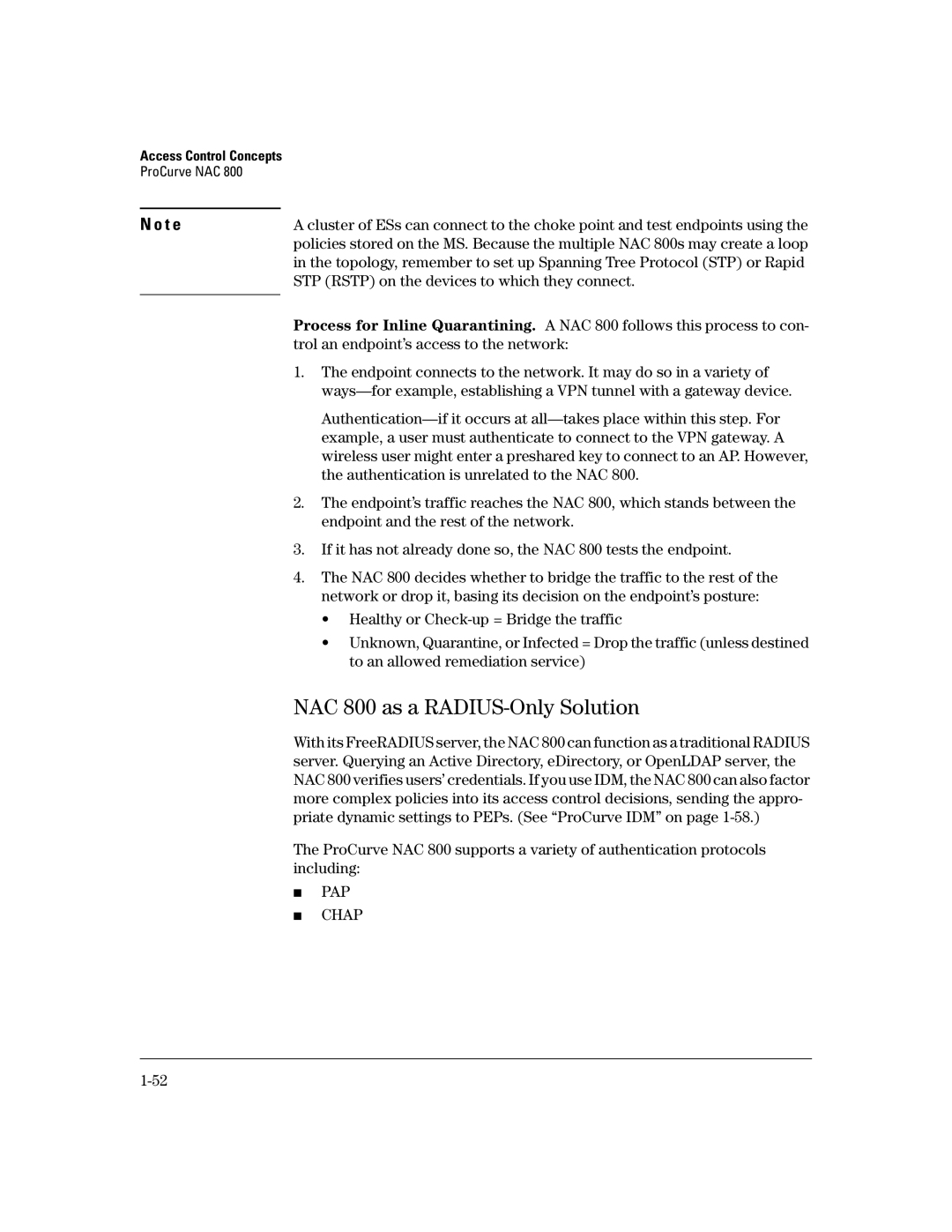
Access Control Concepts
ProCurve NAC 800
N o t e | A cluster of ESs can connect to the choke point and test endpoints using the |
| policies stored on the MS. Because the multiple NAC 800s may create a loop |
| in the topology, remember to set up Spanning Tree Protocol (STP) or Rapid |
| STP (RSTP) on the devices to which they connect. |
|
|
Process for Inline Quarantining. A NAC 800 follows this process to con- trol an endpoint’s access to the network:
1.The endpoint connects to the network. It may do so in a variety of
2.The endpoint’s traffic reaches the NAC 800, which stands between the endpoint and the rest of the network.
3.If it has not already done so, the NAC 800 tests the endpoint.
4.The NAC 800 decides whether to bridge the traffic to the rest of the network or drop it, basing its decision on the endpoint’s posture:
•Healthy or
•Unknown, Quarantine, or Infected = Drop the traffic (unless destined to an allowed remediation service)
NAC 800 as a RADIUS-Only Solution
With its FreeRADIUS server, the NAC 800 can function as a traditional RADIUS server. Querying an Active Directory, eDirectory, or OpenLDAP server, the NAC 800 verifies users’ credentials. If you use IDM, the NAC 800 can also factor more complex policies into its access control decisions, sending the appro- priate dynamic settings to PEPs. (See “ProCurve IDM” on page
The ProCurve NAC 800 supports a variety of authentication protocols including:
■PAP
■CHAP
